If you need any help, please feel free to contact us
Nine Hidden Installation Mistakes That Compromise Flow Accuracy
Have You Ever Faced Inaccurate Readings, Difficult Maintenance, or Complete Failure During Flowmeter Installation?
In most cases, the problem doesn't lie in the instrument itself-but in installation details that are often overlooked.
Insufficient straight pipe runs for electromagnetic flowmeters, incorrectly positioned filters for variable area meters, or pressure taps installed downward on wedge flowmeters--all these small mistakes can lead to significant system malfunctions.
This article summarizes nine of the most common on-site installation issues found in flowmeter applications, helping you avoid these pitfalls right from the source.
01. Improper Installation Position or Insufficient Straight Pipe Length (Electromagnetic Flowmeter)
- To ensure accurate measurement, the flowmeter must always operate under a full-pipe condition.
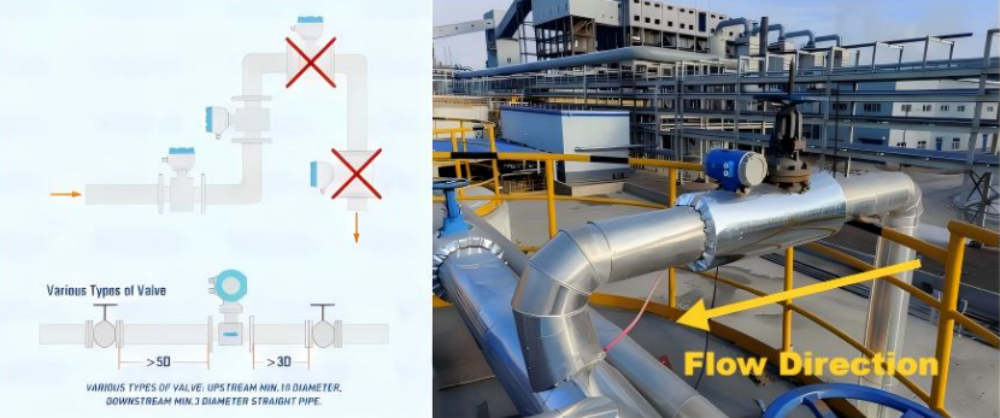
02. Incorrect Installation ofMagnetic Filter (Variable Area Flowmeter)
- The inlet straight run should be measured downstream of the magnetic filter, not before it.
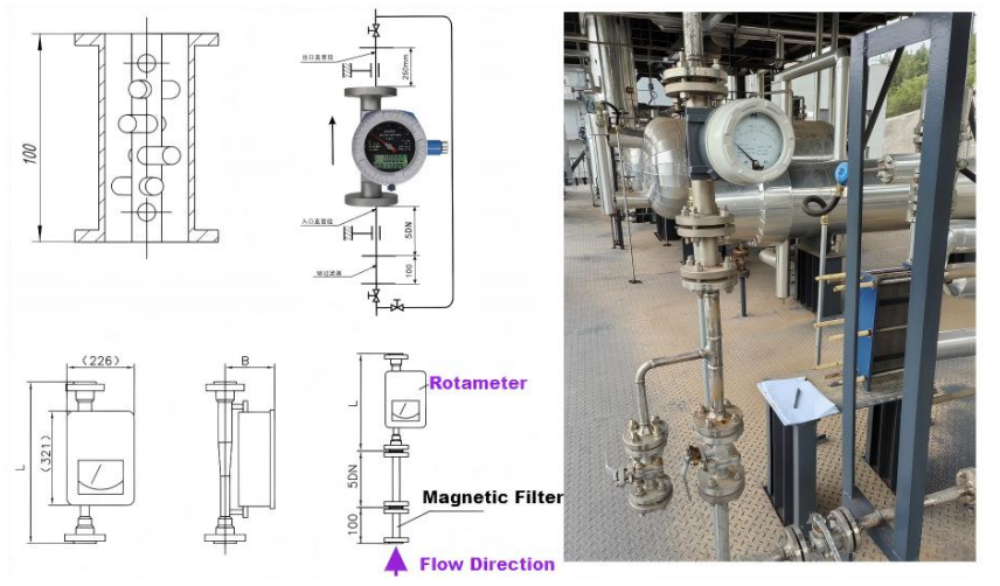
03.Incorrect Installation of Wedge Flowmeter
- Installing the pressure tapping flange facing downward or too close to a platform leaves no space for maintenance and causes sediment buildup in the pressure port, leading to measurement errors. Always ensure proper orientation and maintenance clearance.
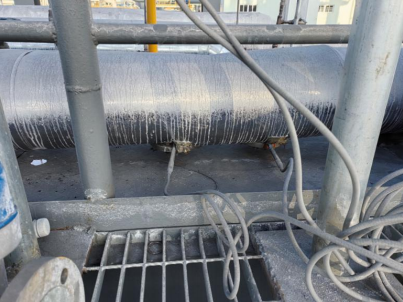
04.Grounding Rings Required for Non-Metallic Pipelines (Electromagnetic Flowmeter)
- Electromagnetic flowmeters must be properly grounded.
- For metallic pipelines, internal grounding electrodes can be used.
- For non-metallic or lined metal pipes, grounding rings are required to ensure stable signal reference.
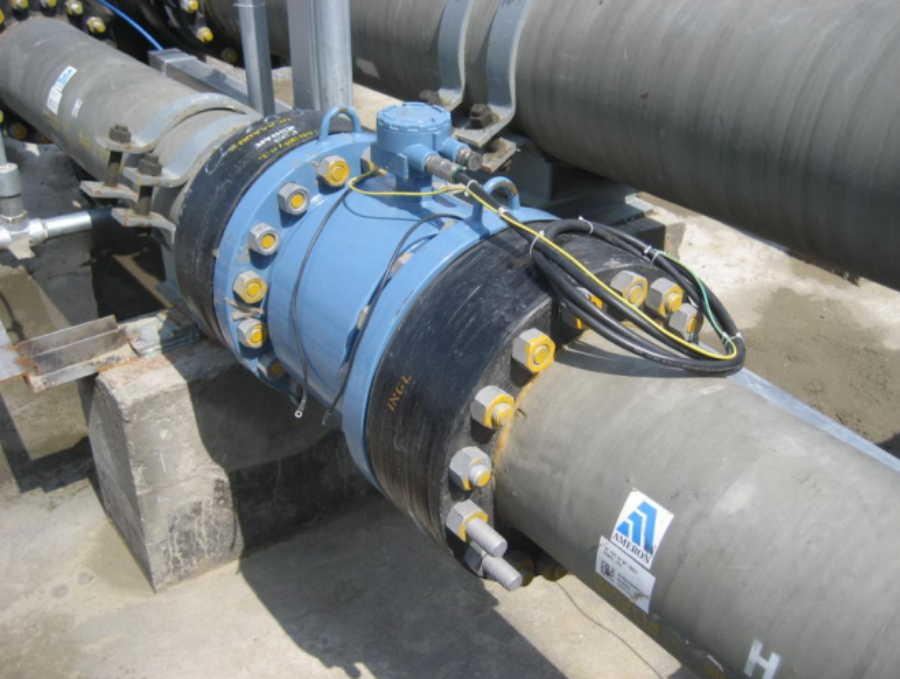
05. Upstream and Downstream Straight Run Requirements (Variable Area Flowmeter)
- The inlet and outlet piping should match the meter bore size.
- If installation space allows, maintain at least 5D upstream and 3D downstream straight pipe lengths.
- Note: Some manufacturers may claim no straight-run requirement. but sufficient lengths are still recommended for
optimal accuracy.
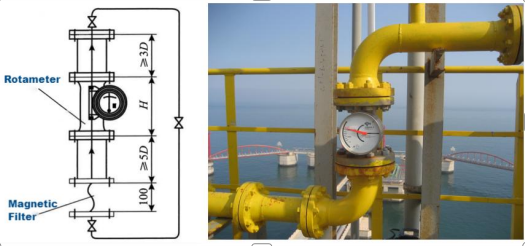
06. Upstream and Downstream Straight Run Requirements (Electromagnetic Flowmeter)
- Avoid installing the flowmeter near flow-disturbing elements such as valves, elbows, or bypass lines.
- Whenever possible, ensure at least 10D upstream and 5D downstream straight runs (the“10D-5D rule").
- At minimum, maintain 5D upstream and 3D downstream to achieve stable and accurate readings.
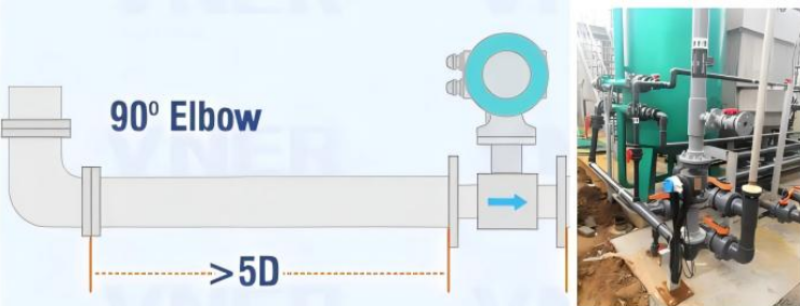
07.Remote-Type Vortex Flowmeter Recommended for Steam Measurement
- For steam measurement and pipe-rack installations, the remote (split-type) vortex flowmeter is recommended.This configuration allows remote reading and parameter setup, keeping the transmitter away from high-temperature zones (>250 °C) and making it suitable for elevated or inaccessible locations.
- The remote cable must be a two-core shielded cable, supplied by the manufacturer, with a standard length of 5 m (customizable up to 20 m).
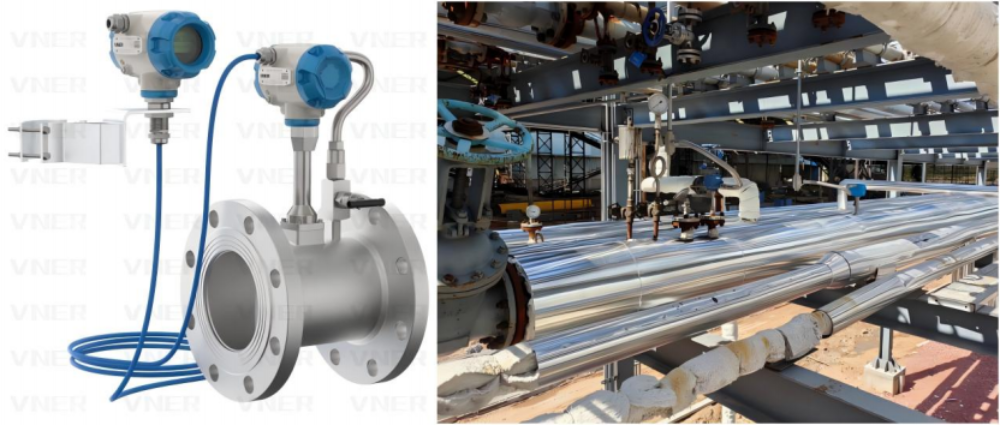
08. Use Remote-Type Instruments for Hard-to-Reach Installations
- For installations located at height, in trenches, or along pipe racks, where on-site observation or adjustment is difficult, remote-type instruments are strongly recommended for safer and more convenient operation.
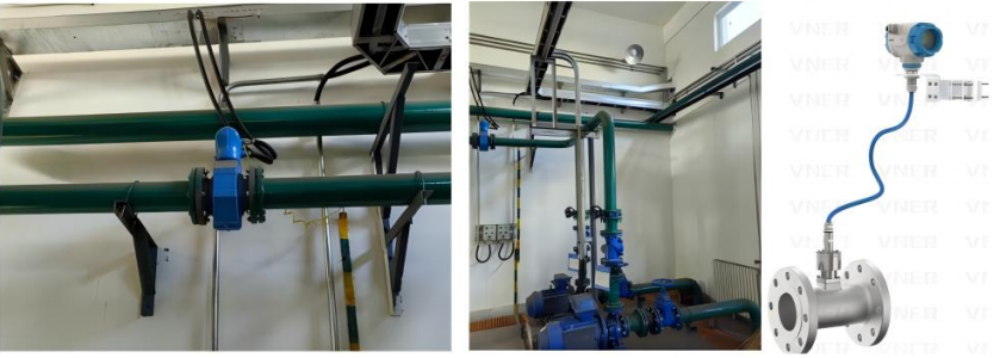
09.Mounting Position of Differential Pressure Transmitters (Orifice Flowmeter)
- Depending on the installation layout, the differential pressure transmitter should be mounted at ground level or on an accessible platform for easier calibration and maintenance.
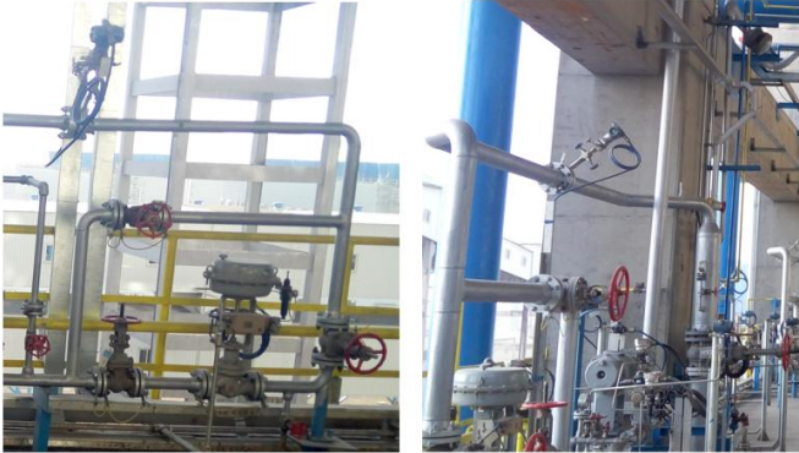
- These nine examples highlight the most common installation errors found in flow measurement applications. By understanding and addressing these details during setup, you can improve reliability, reduce downtime, and ensure long-term measurement accuracy.
 English
English عربى
عربى Español
Español русский
русский Turkish
Turkish